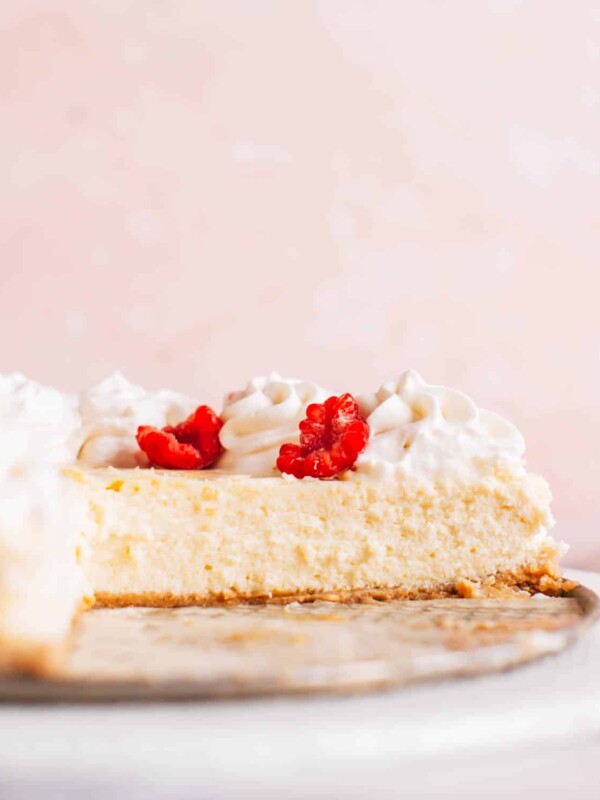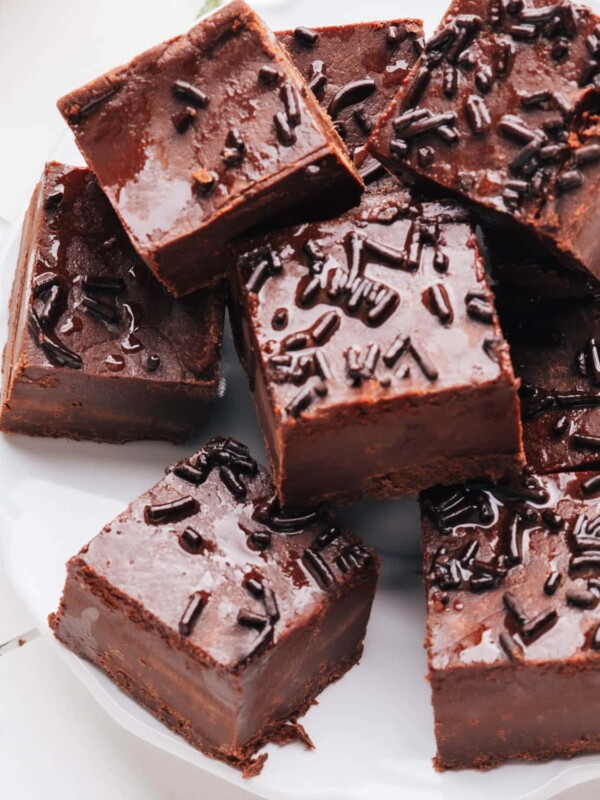This Portuguese Orange Cake is moist and fragrant, with the most alluring bright orange flavour.
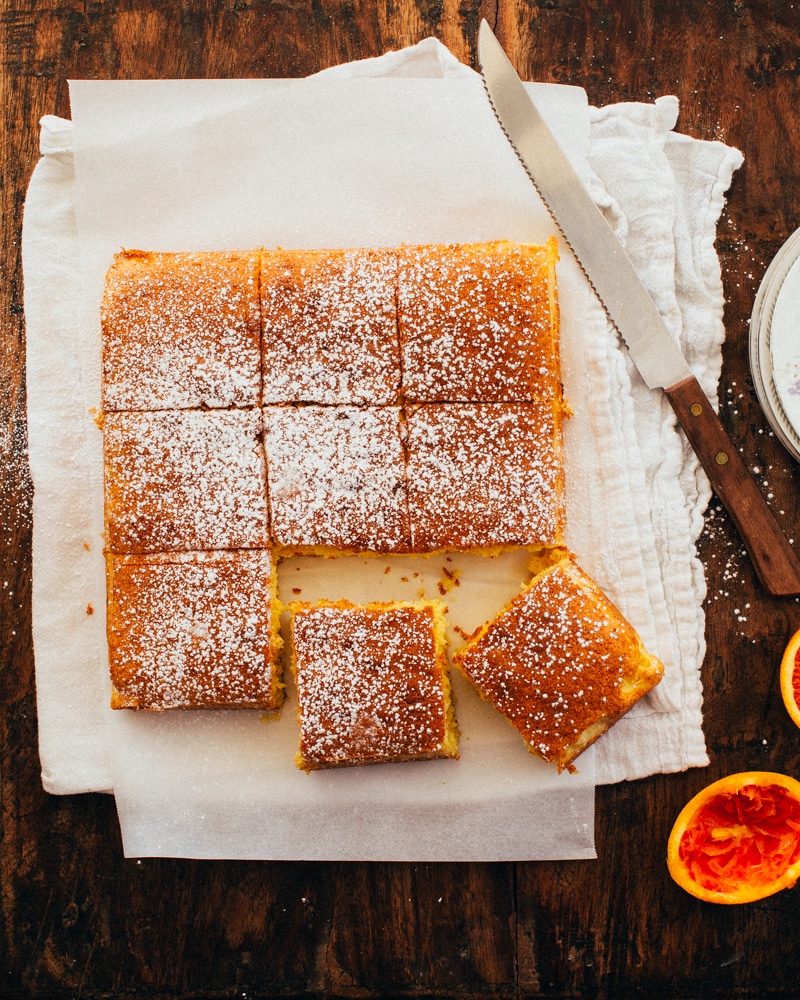
Table of Contents
- This Portuguese Orange Cake recipe is authentic + SO GOOD
- Why The Internet Is Obsessed with this Orange Cake
- Here’s What You Need to Make Fluffy, Moist Orange Cake
- How to Serve this Portuguese Orange Cake
- How to Make Portuguese Orange Cake: An Easy Guide
- Make Ahead and Storage
- Other Citrusy Recipes You’ll Love
- Orange Cake FAQs
- Portuguese Orange Cake Recipe (Moist + Fluffy!) Recipe
This Portuguese Orange Cake recipe is authentic + SO GOOD
This beloved orange cake recipe was shared with my by my friend Cherie who is married to a Portuguese man with a major penchant for the orange cake of his country.
This simple Portuguese orange cake recipe is moist and fragrant, with the most alluring bright orange flavour. Both the zest and juice of three oranges are involved, so it is wonderfully orange-y.
It’s definitely one of the best cake recipes I’ve got.
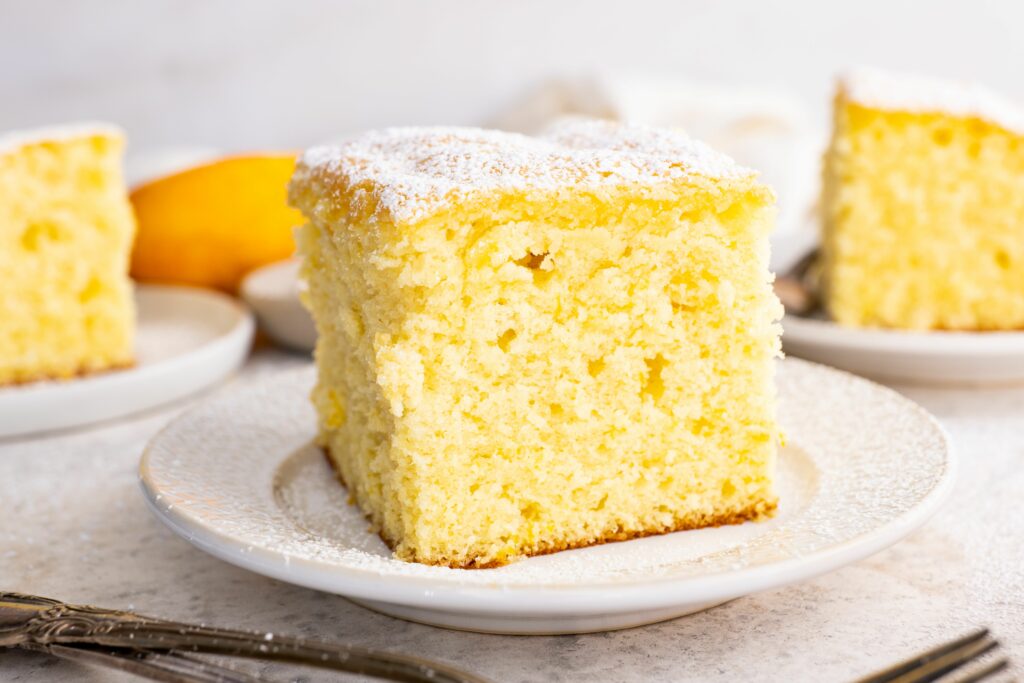
Why The Internet Is Obsessed with this Orange Cake
This moist orange cake recipe has been a fan favorite on the Foodess blog since I posted it a decade ago, and for good reason.
It’s a sponge cake of sorts, with egg whites folded in at the last minute to lighten the batter, but with more moisture than the airy sponge cakes you may have had.
Both the zest and juice of three oranges are involved, so it is wonderfully orange-y and citrus-y.
It leans slightly more toward bitterness than the tartness you might expect from citrus desserts – this is owing to the lashings of zest beaten into the batter.
Don’t worry, it’s not bitter-bitter, just enough to be intriguing.
Bottom line? You get a moist orange cake and a fluffy, airy sponge cake vibe all in one gorgeously orange-packed bite.
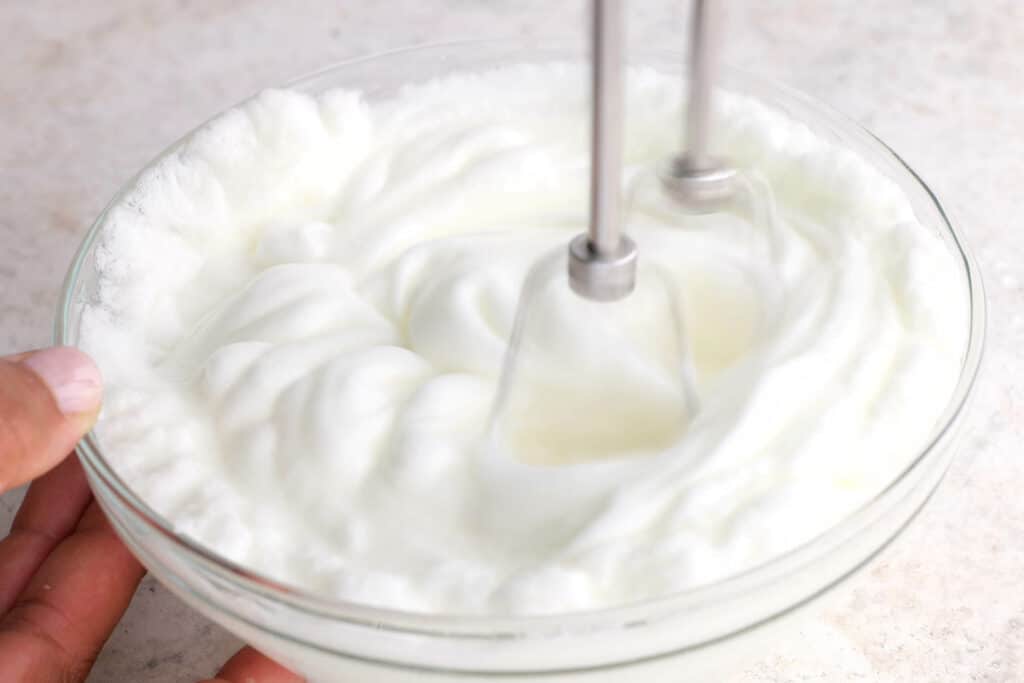
Here’s What You Need to Make Fluffy, Moist Orange Cake
For this Portuguese Orange Cake recipe, it’s all about simple ingredients that pack a big flavor. Let’s break down what you’ll need.

Orange Cake Ingredients
I’ve got a pretty straightforward list here. Each ingredient plays a key role in making this cake as delightful as it is.
- Butter: Gives the cake a rich flavor and tender crumb.
- Granulated Sugar: Sweetens the cake, balancing the zestiness of the oranges.
- Large Eggs: Bind the ingredients together, with yolks adding richness and whites providing lift.
- Orange: The stars of the show. Zest adds a punch of flavor, while orange juice keeps everything moist. It’s a double whammy of flavor.
- All-purpose Flour: Provides structure for the cake, making it sturdy yet soft.
- Baking Powder: Acts as a leavening agent, helping the cake rise beautifully.
- Confectioners’ Sugar: Optional for dusting, adds a sweet finish and looks pretty.
Make sure to bring all of your ingredients to room temperature before you bake – cold eggs or oranges will cause the butter to seize up. Here’s how to quickly bring ingredients to room temperature.
Variations and Substitutions
Feel free to mix things up with these ideas. Each one can help tailor the cake to your liking.
- Swap Oranges for Lemons: For a twist, lemons can replace oranges, offering a tangier flavor.
- Dairy-Free Butter: If you’re avoiding dairy, use your favorite plant-based butter.
- Gluten-Free Flour: Swap in a gluten-free all-purpose blend to make this cake accessible to everyone.
- Add Nuts: Fold in some chopped almonds or walnuts for added texture and nuttiness.
Grab These Tools
A few basic tools and you’re on your way to baking bliss. Here’s what to gather.
- 8×8″ Baking Dish: The perfect size for this cake, ensuring even cooking.
- Electric Mixer: Makes creaming butter and sugar, as well as whipping egg whites, a breeze.
- Mixing Bowls: You’ll need a few, one for dry ingredients, one for the butter mixture, and one for egg whites.
- Whisk and Spatula: For combining ingredients smoothly and folding in those egg whites gently.
- Zester and Juicer: Essential for getting all that flavorful orange zest and juice.
You’ll also need a wire rack for cooling, and a toothpick or meat thermometer to check doneness.
Other Sized Pans
- For a 9-inch round pan, the batter amount should be just about right for a single layer.
- I don’t recommend loaf pans for this cake. It’s too much batter for a single pan and not enough for 2 fluffy loaf cakes.
- For a layer cake, you could try:
- Dividing the batter evenly between two 8-inch round cake pans.
- This will reduce the baking time, so start checking around 20-25 minutes.
- Fluffy vanilla frosting, cream cheese frosting or simple whipped cream would be nice to fill and ice the cake.
Always keep an eye on the oven, and use the toothpick test (or better yet, check for 190ºF on a meat thermometer) to check if the cake is ready.
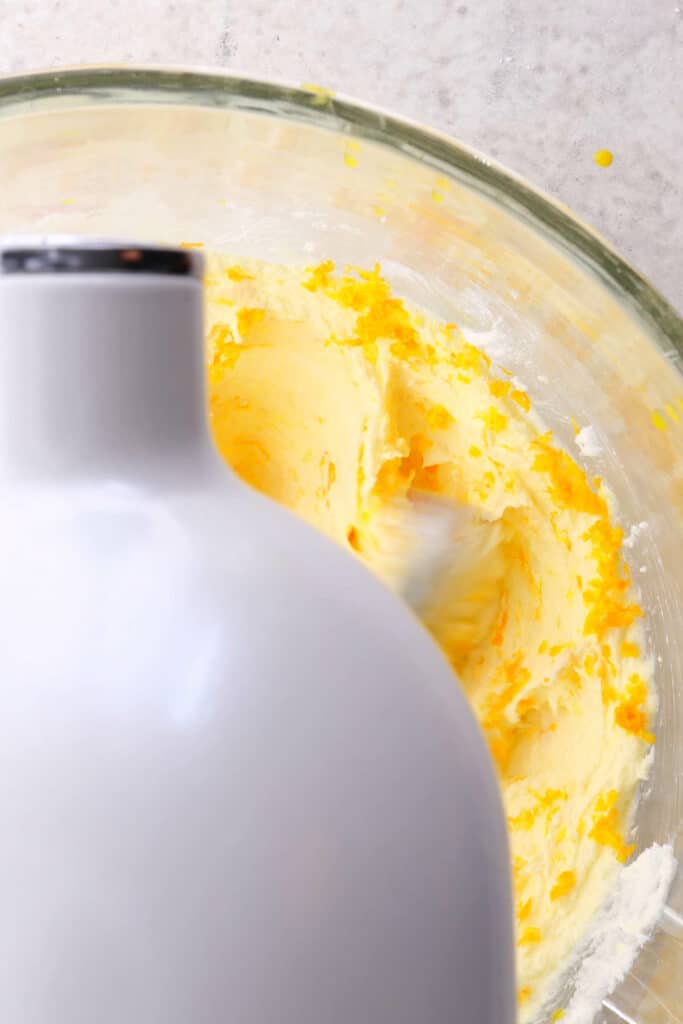
How to Serve this Portuguese Orange Cake
- Room Temperature is Best: For both flavor and texture and texture.
- Dusting with Sugar: Right before serving, dust with confectioners’ sugar for a sweet touch and a beautiful look.
- Cream on the Side: Offer whipped cream or a dollop of mascarpone. Their richness contrasts beautifully with the cake’s moisture.
How to Make Portuguese Orange Cake: An Easy Guide
Baking a Portuguese Orange Cake is a breeze with the right approach. Here’s a step-by-step guide to making this moist and flavorful cake.
Prep Work
Before anything else, let’s set the stage for baking. This initial prep makes everything else smoother.
- Preheat the Oven: Start by heating your oven to 350ºF (180ºC). This ensures it’s at the right temperature when your cake is ready to go in.
- Prepare the Baking Dish: Grease an 8×8″ dish or line it with parchment paper. This helps the cake come out easily after baking.
Mixing the Batter
The batter is where the magic happens. It’s all about combining flavors and textures.
- Cream Butter and Sugar: Use your electric mixer to beat the butter and sugar until light and fluffy. This takes about 2 minutes.
- Add Egg Yolks and Orange: Incorporate the egg yolks one at a time, then mix in the orange zest and juice. Don’t worry if it looks curdled at first.
- Combine Dry Ingredients: Add the flour mixture to the butter mixture and beat until just incorporated. Avoid overmixing to keep the cake light.
Folding in Egg Whites
Egg whites add airiness to the cake, giving it a wonderful texture.
- Whip the Egg Whites: In a separate bowl, beat the egg whites to stiff peaks. This introduces air, making the cake fluffy.
- Fold into Batter: Gently fold a third of the egg whites into the batter to lighten it. Then, carefully fold in the rest, keeping as much air as possible.
Baking and Cooling
Now, into the oven it goes. The waiting is the hardest part!
- Bake the Cake: Pour the batter into your prepared dish and bake. Check after 35 minutes, but it may need up to 45. The cake should feel springy to the touch.
- Cool and Slice: Let the cake cool in the pan on a cooling rack before dusting with confectioners’ sugar, if using. Use a sharp knife to cut into 9 pieces.

Make Ahead and Storage
Here’s how to keep your Portuguese Orange Cake tasting great, whether you’re prepping ahead or enjoying leftovers.
- Make Ahead: You can prepare the batter up to a day in advance. Store it covered in the fridge, then let it come to room temperature before baking.
- Room Temperature Storage: Keep the cooled cake in an airtight container. It stays fresh for up to 3 days on your counter.
- Should I refrigerate? I don’t recommend storing this cake in the refrigerator. Read my article on how long cake lasts in the fridge to find out why.
- Freezing: This cake freezes well. Wrap it tightly in plastic wrap and then in foil. Enjoy it within 3 months for the best flavor.
- Thawing: Thaw overnight in the fridge or for a few hours on the counter. This keeps the texture nice and moist.
With these tips, you can enjoy your Portuguese Orange Cake at its best, anytime you like.
Other Citrusy Recipes You’ll Love
Start with this collection of drool-worthy orange dessert recipes.
- This moist Blood Orange Cake with pretty blood orange glaze.
- Lemon Pound Cake
- This Lemon Curd Cake is definitely a must-try for citrus lovers.
- Lemon Blueberry Sour Cream Muffins
- Lemon Curd Cookies can’t be missed either.
- Love citrus, love chocolate cake? This Chocolate Orange Cake is for you.
- This Cranberry Lemon Cake is a long-standing favorite.
Of course, can’t forget orange bundt cake. This recipe for orange pound cake with orange glaze is baked up in a pretty bundt pan.
Orange Cake FAQs
Just skimming through? Here are some quick answers to the commonly-asked questions.
Orange cake is made of butter, sugar, eggs, oranges (both zest and juice), flour, and baking powder.
To intensify the orange flavor in a cake, use fresh orange zest and juice. You can also add orange extract or a bit of orange liqueur to the batter.
Cinnamon, cardamom, and clove are spices that enhance the flavor of orange in cakes and desserts. They add warmth and depth.
Chocolate, vanilla, and almond flavors complement orange beautifully.
Yes, you can make this cake gluten-free by substituting the all-purpose flour with a gluten-free flour blend. Make sure to check the blend is suitable for baking.
For a dairy-free version, replace the butter with a plant-based butter alternative. Ensure it’s one that can be used for baking.
While fresh orange juice is preferred for its flavor, you can use bottled orange juice in a pinch. Make sure it’s 100% juice without added sugars.
Stored in an airtight container at room temperature, the cake stays fresh for up to 3 days. In the fridge, it can last up to a week.
Yes, this cake freezes well. Wrap it tightly in plastic wrap and then in foil. It keeps for up to 3 months in the freezer.
To ensure the cake comes out moist, don’t overbake it. Keep a close eye on it after the 35-minute mark and test for doneness.

Portuguese Orange Cake Recipe (Moist + Fluffy!)
Ingredients
- ⅔ cup butter softened
- 1 ¼ cups granulated sugar
- 4 large eggs separated, room temperature
- 3 large oranges room temperature
- 2 cups all purpose flour
- 1 tsp baking powder
- Confectioners’ sugar for dusting (optional)
Instructions
- Preheat oven to 350ºF (180ºC). Grease an 8×8″ baking dish or line with parchment paper.
- Beat butter and sugar on medium speed of electric mixer until light and fluffy, about 2 minutes.2/3 cup butter, 1 1/4 cups granulated sugar
- Add egg yolks, one at a time, beating well after each.4 large eggs
- With mixer on low speed, add the zest and juice from all three oranges. The mixture will appear curdled at first – that's ok. Increase mixer speed to medium and beat until it comes together, pausing to scrape down sides of bowl as needed.3 large oranges
- In a separate bowl, whisk flour and baking powder. With mixer speed on low, gradually beat into the butter mixture until just incorporated.1 tsp baking powder, 2 cups all purpose flour
- In another bowl, whip egg whites until stiff peaks form. Fold 1/3 of the whites into the cake batter to lighten it up, then gently fold in the rest. (Use a light hand so you don't deflate the whites.)4 large eggs
- Scrape batter into prepared baking pan and bake for 35-45 minutes, until top feels springy when gently pressed and tester inserted in centre comes out clean or with just a few moist crumbs. Internal temperature will be 190ºF on a meat thermometer. Once cake is cooled, dust with confectioners' sugar, if desired.Confectioners’ sugar
Video
Notes
- Zest: From three large oranges, you might get around 3 to 4 tablespoons of zest.
- Juice: These oranges should yield about 1 cup of juice.
Nutrition
Nutrition information is automatically calculated, so should only be used as an approximation.

